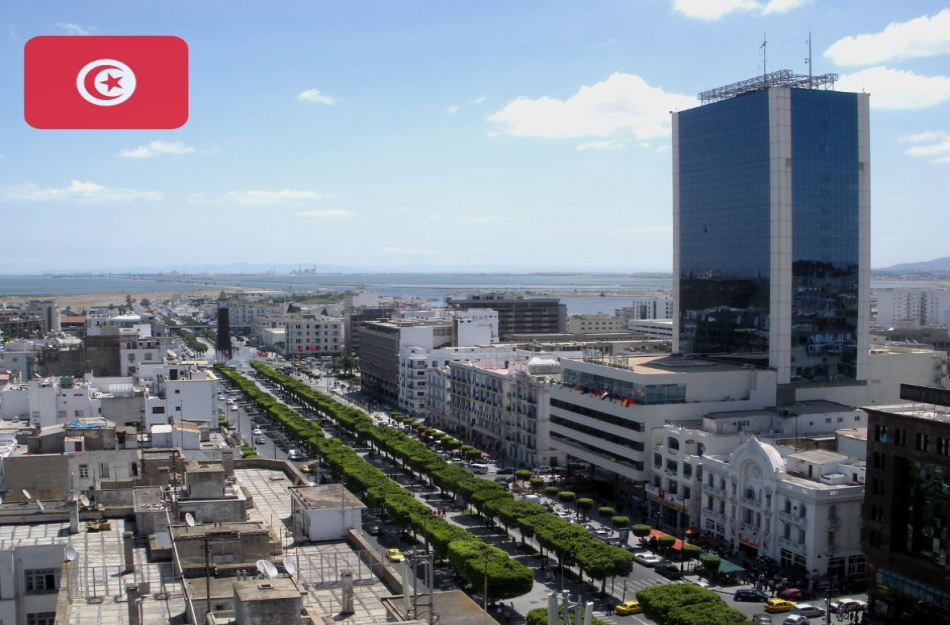
Aizen
Tunisia's Foreign Trade Soars, Representing 94% of GDP: Key Figures Unveiled
In a recent report by the World Bank, Tunisia's foreign trade has emerged as a powerhouse, constituting a staggering 94% of the nation's Gross Domestic Product (GDP). The data, the latest available, underscores the pivotal role played by international trade in Tunisia's economic landscape.
Export Highlights: Wire and Cable Manufacturing Leads the Charge
Tunisia's export landscape is dominated by wire and cable manufacturing, comprising a substantial 13.3% of all exports. This is followed closely by textiles, petroleum by-products, olive oil, vehicle parts, and plastics. Notably, hydrocarbon products emerge as the cornerstone of Tunisia's imports, with vehicles, electric apparatus, wheat, and transportation and travel trailing closely behind, as per Comtrade data.
EU Dominance: Tunisia's Premier Trading Partner
The European Union emerges as Tunisia's primary trading partner, commanding a significant 67.5% of its exports and 44.2% of imports. On a country level, Tunisia's exports are strategically directed towards France (24.1%), Italy (18.4%), Germany (12.8%), Spain (4.1%), and Libya (3.9%). Meanwhile, imports are predominantly sourced from Italy (13.5%), France (11.4%), China (10.4%), Germany (6.5%), and Turkey (5.4%).
Global Ties: Tunisia's Ongoing Trade Partnerships
Tunisia has been actively fostering trade ties beyond its borders. The nation signed a crucial trade cooperation agreement with Ghana in 2019 and, in the same year, officially joined the Common Market for Eastern and Southern Africa (COMESA). Additionally, Tunisia is poised to join the Economic Community of West African States (ECOWAS) and is a signatory to the African Continental Free Trade Area (AfCFTA), showcasing a commitment to broader African economic integration.
Balancing Act: Tunisia's Trade Deficit Challenges
Despite the impressive trade numbers, Tunisia grapples with a structurally negative trade balance, standing at approximately 10.1% of GDP in 2021. The deficit expanded in 2022, with exports reaching USD 18.8 billion and imports surging to USD 27.1 billion. The trade deficit worsened from TND 16.2 billion in 2021 to 25.2 billion in 2022, leading to a coverage rate drop of 4.7 points to reach 69.5%.
Export Dynamics: Key Sectors Driving Growth
Mechanics and electronics took the lead in Tunisia's export dynamics from January to May 2022, accounting for nearly 10 billion Tunisian dinars (3.25 billion U.S. dollars). Textiles, clothing, and leather followed closely with approximately 4.5 billion Tunisian dinars (1.5 billion U.S. dollars), while agricultural and food products contributed approximately 2.9 billion Tunisian dinars (940 million U.S. dollars).
Global Impact: Tunisia's Export Prowess
In 2022, Tunisia shipped an estimated USD 19.4 billion worth of products globally, marking a robust 24.8% increase over the past five years. The country witnessed an impressive year-over-year export growth of 17.9%, reaching USD 16.4 billion in 2021.
Export Spectrum: Tunisia's Top 10 Exports
Tunisia's top 10 exports in 2022 reveal a diversified portfolio, with electrical machinery and equipment leading the charge at 27.2% of total exports, followed by clothing and accessories (13.7%), mineral fuels (7%), knit or crochet clothing (5.7%), and animal/vegetable fats, oils, and waxes (4.5%).
Global Reach: Tunisia's Trade Dynamics
From a continental perspective, 78.6% of Tunisia's exports were directed to European countries, emphasizing the nation's strong ties with the EU. Africa received 11% of Tunisia's exports, while Asia and North America accounted for 6.6% and 3.2%, respectively.
Future Outlook: Tunisia's Economic Landscape
With these key figures in focus, Tunisia stands at the crossroads of economic challenges and opportunities. The nation's active pursuit of global partnerships and diversified export sectors paints a picture of resilience and adaptability in the face of a dynamically evolving international trade landscape.